Donald J. Robertson's Blog, page 20
March 17, 2024
Stoicism on Theology as Metaphor
What if the Greek and Roman myths were “history in disguise” — stories about real historical individuals and events that gradually became exaggerated and distorted through centuries of retelling? Some influential ancient Stoics appear to have been proponents of a theological doctrine, later known as Euhemerism, which said just this.
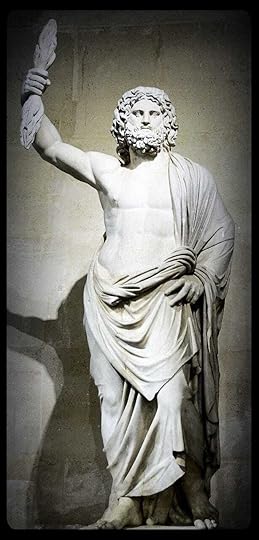
The term “Euhemerism” is derived from the name of an obscure Greek philosopher called Euhemerus, believed to have been born in Messina, Sicily. Euhemerus was a friend and courtier of King Cassander of Macedonia, and a contemporary of Zeno of Citium, the founder of Stoicism. His major work Sacred History was written in the early 3rd century BC, during the first decades after Zeno founded his Stoic School in Athens. Only fragments of Euhemus’ writings, quoted by other authors, survive today. However, from these the broad outlines of his philosophy can be seen.
Stoicism: Philosophy as a Way of Life is a reader-supported publication. To receive new posts and support my work, consider becoming a free or paid subscriber.
Euhemerus argued that mythological accounts of the gods should not be taken literally but rather interpreted in a more rational and naturalistic manner. He believed that most of these myths originated in accounts of real events and individuals, which had become exaggerated and mythologized over time. Storytellers naturally tend to embellish stories and so what began as naturalistic accounts of real historical events, such as the lives of famous rulers, are gradually distorted by continual retelling over the centuries and turned into mythological accounts of supernatural events. Today, we might also describe Euhemerus as favouring a relatively skeptical perspective on ancient myths and theology.
In short, Euhemerus appears to have developed a systematic account of ancient myths, which claimed that the gods were originally great kings, heroes, and benefactors of humanity, who became objects of religious veneration over time. He noted that the deification or apotheosis of powerful rulers was not uncommon, even within living memory, such as that of the tyrant Dion of Syracuse, a couple of generations earlier, or the Egyptian pharaohs. (Centuries later, of course, Stoics would witness the Romans also deifying their emperors.) This observation naturally led to the skeptical view that myths concerning most deities originated in a similar manner but were fashioned into increasingly supernatural stories.
There appear to be two main ways in which this tradition reinterprets myths naturalistically:
Some myths about gods are read as symbolic representations of natural phenomena, e.g., the Egyptians worship the River Nile as a god, the discovery of wine led to its personification as the god Dionysus, etc.
Others myths are viewed as resulting from the deification of kings (also pharaohs and emperors) and various great men and women
For example, Euhemerus claims that Zeus was actually a real king of Crete, who became so highly revered that legends gradually turned him into a god. This interpretation was supported by the fact that the Cretans were known for making the controversial claim that a tomb near Knossos, inscribed with the words “The tomb of Zeus”, contained the mortal remains of a Cretan king upon whose life the myth of the Greek god was originally based. Porphyry later claimed that Pythagoras discovered the tomb and inscribed it with the words “Here died and was buried Zan, whom they call Zeus”. In fact, Cretans had earned a reputation among other Greeks for being liars and atheists because of their controversial claim that Zeus had, in reality, been a mortal king of Crete.
These naturalistic and somewhat skeptical methods of interpreting myths don’t necessarily lead to atheism. However, perhaps unsurprisingly, positions resembling Euhemerism were widely regarded in the ancient world as forms of atheism or agnosticism, which could lead to the persecution of those advocating such ideas.
Although he became known for promoting it, Euhemerus was not the first to develop a rational, naturalistic interpretation myths. Some of the natural philosophers who preceded Socrates appear to have held similar views. For example, Xenophanes observed that people tend to construct representations of the gods in their own image:
But if cattle and horses and lions had hands
or could paint with their hands and create works such as men do,
horses like horses and cattle like cattle
also would depict the gods’ shapes and make their bodies
of such a sort as the form they themselves have. […]
Ethiopians say that their gods are snub–nosed and black
Thracians that they are pale and red-haired. — Xenophanes
If a god exists he must be quite unlike humans. “But mortals think that the gods are born and have the mortals’ own clothes and voice and form”, says Xenophanes. In other words, we naturally tend to create anthropomorphic images of gods. The natural philosophers who came before Socrates therefore realized that the gods of Greek mythology were probably, in some sense, merely human inventions. However, it was from the Sophists that the Stoics inherited their naturalistic interpretation of the gods as “history in disguise”.
The Sophists as EuhemeristsProtagoras, the first famous Sophist, earned considerable notoriety for his agnosticism. According to Diogenes Laertius, for instance, his book On the Gods began with the words:
As to the gods, I have no means of knowing either that they exist or that they do not exist. For many are the obstacles that impede knowledge, both the obscurity of the question and the shortness of human life. — Protagoras, On the Gods
Protagoras’ most famous student, the Sophist Prodicus, a friend of Socrates, was also frequently labelled an “atheist” or “agnostic” because, a few generations before Euhemerus, he embraced a naturalistic reinterpretation of the gods as symbolic personifications of natural phenomena.
Prodicus of Ceos says that ‘the ancients accounted as gods the sun and moon and rivers and springs and in general all things that are of benefit for our life, because of the benefit derived from them, even as the Egyptians deify the Nile.’ And he says that it was for this reason that bread was worshipped as Demeter, and wine as Dionysus, and water as Poseidon, and fire as Hephaestus, and so on with each of the things that are good for use. — Sextus Empiricus, Against the Mathematicians
These sort of interpretations appear to have been very familiar to educated Greeks. For instance, in the Phaedrus, Plato portrays Socrates discussing the myth about Boreas, the god of the north wind, abducting the Athenian princess Orithyia. Socrates mentions that some intellectuals, perhaps Sophists like Prodicus, claim the myth originated because a strong gust of wind blew a real girl called Orithyia over the rocks by the riverside, causing her to fall to her death, something that became transformed over time into the myth that she had been carried off by Boreas, the god of the north wind. However, Plato’s Socrates finds this mode of naturalistic interpretation somewhat unpersuasive.
The Early Stoic EuhemeristsThe famous allegory of Prodicus, called “The Choice of Hercules”, as recounted in Xenophon’s Memorabilia of Socrates, was apparently the text that inspired Zeno of Citium to become a philosopher. It ultimately led to the founding of the Stoic school. As we’ll see, we’re told that one of Zeno’s most influential students accepted Prodicus’ interpretation of religious myths as metaphors for natural phenomena. Although we can’t be certain, it’s quite possible therefore that Zeno himself also adopted this view, as it may have followed quite naturally from his pantheism.
In Diogenes Laertius, who provides one of our best accounts of early Greek Stoicism, we’re told:
The deity, say they, is a living being, immortal, rational, perfect or intelligent in happiness, admitting nothing evil [into him], taking providential care of the world and all that therein is, but he is not of human shape. He is, however, the artificer of the universe and, as it were, the father of all, both in general and in that particular part of him which is all-pervading, and which is called many names according to its various powers. They give the name Dia because all things are due to him; Zeus in so far as he is the cause of life or pervades all life; the name Athena is given, because the ruling part of the divinity extends to the aether; the name Hera marks its extension to the air; he is called Hephaestus since it spreads to the creative fire; Poseidon, since it stretches to the sea; Demeter, since it reaches to the earth. Similarly men have given the deity his other titles, fastening, as best they can, on some one or other of his peculiar attributes. — Diogenes Laertius
This is attributed to Stoics in general, although the context suggests it may perhaps have been the original view of Zeno, perhaps stated in his treatise On the Whole.
For the Stoics, therefore, the universe considered in its totality was divine, a single living rational being, which they called Zeus. “Zeus” and “Nature” were therefore basically synonymous terms, as they would later be for Spinoza, another pantheist, who became notorious during his lifetime for saying Deus sive Natura — “God aka Nature”. By interpreting the traditional myths as metaphors for Nature as a whole, or aspects thereof, the Stoics could potentially avoid the charge of atheism for which earlier philosophers had been persecuted. Although sometimes the very ambiguity of their position would backfire and bring the same charge upon their heads.
Zeno, in his Republic, reputedly taught that all temples and religious sculptures should be abolished. Similar views resurface three centuries later in the Pharsalia of Lucan, Seneca’s nephew, which portrays the Stoic Cato of Utica refusing to seek an oracle from the priests in a temple to Zeus (called Jupiter by Romans) because he is a pantheist and therefore believes that god is everywhere and within everyone equally.
Did he select the barren sands
to prophesy to a few and in this dust submerge the truth
and is there any house of God except the earth and sea and air
and sky and excellence? Why do we seek gods any further?
Whatever you see, whatever you experience, is Jupiter. — Lucan, Pharsalia
In an article entitled ‘The Stoic Worldview’, John Sellars, one of the leading contemporary scholars of Stoicism, writes:
It is difficult to know how serious this talk of ‘God’ was. The early Stoic Cleanthes appears very sincere in his ‘Hymn to Zeus’, for instance, and we have no reasons to doubt his sincerity. However the Stoics were also well known for offering allegorical interpretations of the pagan Gods, including allegorical interpretations of the portraits of the Gods in Homer for instance. Famously, the Stoic Chrysippus once said that Zeus and his wife Hera are actually the active and passive principles in Nature, breath and matter. (In one source, Diog. Laert. 7.147, divine names for Nature are explained on the basis of their etymology.) Much later, in the third century AD, the philosopher Plotinus said that the Stoics bring in God into their philosophy only for the sake of appearances (Enn. 6.1.27). If ‘God’ is simply another name for Nature then it doesn’t really do much work in their philosophy; it doesn’t add or explain anything, so one might easily drop the word without any obvious loss. — John Sellars
Indeed, the Stoics became especially known for interpretation the Greek myths allegorically, as metaphors or symbols for various natural phenomena and processes. For instance, Henry Sedgwick, in his biography of Marcus Aurelius, summarizes the original teachings of Zeno of Citium, the founder of Stoicism as follows:
Zeus, Hera and Vesta,
And all the gods and goddesses
Are not Gods, but names
Given to things that lack life and speech;
For Zeus is the sky, Hera the air,
Poseidon the sea, and Hephaestus fire.
We’re actually told that Persaeus, the most prominent of Zeno’s immediate students, adopted this agnostic or atheistic way of interpreting the gods from the teachings of Prodicus.
Persaeus appears in reality to be prepared to dispense with a divinity, or at least take up an agnostic position; seeing as, in his treatise On the Gods, he says that Prodicus was not unpersuasive in writing that things that provided nourishment or other help to us were the first things to be acknowledged and honoured as gods, and later that persons who first found new means of obtaining food or providing shelter, or invented other arts and crafts were called names like Demeter, Dionysus and the like. — Philodemus, On Piety
Cicero also attributes Prodicus’ view of the gods to Persaeus:
Persaeus says that it was men who had discovered some great aid to civilization that were regarded as gods, and that the names of divinities were also bestowed upon actual material objects of use and profit, so that he is not even content to describe these as the creations of God, but makes out that they are themselves divine. — Cicero, On the Nature of the Gods, 1.15
In his recent book, Battling the Gods: Atheism in the Ancient World, Tim Whitmarsh therefore classes the Stoic Persaeus as an atheist, like Prodicus before him. Early Christian authors familiar with Stoicism, would turn this into a way of refuting the very existence of their pagan gods. They enthusiastically embraced Euhemerism, with regard to the Greek and Roman gods, allowing Clement of Alexandria to exclaim: “Those to whom you bow were once men like yourselves”.
However, Persaeus wasn’t the only Stoic to use arguments based on the historical theory of mythology. We actually have a surviving text from the Stoic Cornutus, titled the Compendium of Greek Theology, which elaborates at great length on the symbolic interpretation of the gods, drawing heavily on speculations about ancient etymologies.
For example, the Greek goddess Artemis was traditionally given the epithet Phosphoros, meaning “light-bearing” because, says Cornutus, the moon, like a lesser version of the sun, also “emits light and illuminates the surroundings to some extent,” especially when it is full. The moon, he says, came to be depicted as the huntress Artemis because it appears to “chase” the animals of the zodiac “and swiftly catches them up — speed being something associated with a hunt as well.” Cornutus therefore concludes:
In the same way, my child, you can apply these basic models to everything else that comes down through mythology concerning those considered to be gods, in the conviction that the ancients were far from mediocre, but were capable of understanding the nature of the cosmos and ready to express their philosophy in symbols and enigmas. — Cornutus, Compendium of Greek Theology
Cornutus wanted to remove “superstition” from the ancient myths by interpreting them symbolically but he still believed piety was important and customary rituals should be preserved. Throughout his text traditional myths concerning each of the gods are understood metaphorically as references to different aspects of divine Nature.
Seneca, who was a contemporary of Cornutus, makes it clear that he sees the ancient myths as akin to children’s stories and that no educated adult should take them literally.
I am not so foolish as to go through at this juncture the arguments which Epicurus harps upon, and say that the terrors of the world below are idle — that Ixion does not whirl round on his wheel, that Sisyphus does not shoulder his stone uphill, that a man’s entrails cannot be restored and devoured every day; no one is so childish as to fear Cerberus, or the shadows, or the spectral garb of those who are held together by naught but their unfleshed bones. — Seneca, Letters, 24
It’s not necessarily the case that skeptical positions like Euhemerism should lead to atheism or even agnosticism. One might believe in the divinity of Nature as a whole, like the Stoics, or in a single transcendent God, like the Christians, while interpreting numerous ancient myths as “history in disguise”, deriving them from distorted accounts of real historical individuals and natural phenomena. However, once you start down the skeptical road, it can be hard to turn back. Someone who basically reinterprets all of the traditional myths allegorically is surely bound to go on to question whether or not gods even exist at all.
Thank you for reading Stoicism: Philosophy as a Way of Life. This post is public so feel free to share it.
March 12, 2024
Healing the Now by Imagining the Future
I began practicing as a psychotherapist in the mid-1990s. I studied many different approaches. I used to train other therapists and became known as a psychological “techniques guy” because I was fascinated by the variety of psychological strategies and tactics we can learn.

You’ll find psychological techniques in books on psychotherapy, as well as in self-help books and even spiritual and philosophical classics. Each individual technique can be classified in different ways. For instance, is it broadly visual, meditative, cognitive, verbal, written, or behavioral in nature? Some are quite complex. Others are surprisingly easy to learn, and work pretty reliably — they often provide “easy wins” for therapists.
Thank you for reading Stoicism: Philosophy as a Way of Life. This post is public so feel free to share it.
I’ll let you in on a trade secret. Most experienced psychotherapists know that one such easy win is what we call “time projection”. That’s the terminology used by early cognitive-behavioral therapists, although you’ll find similar techniques in lots of other types of books. Time projection is a vague term that refers to using your imagination to shift your perspective as if you’re in the future or the past. There many different ways of doing this. Some work better than others. Let me give you my favorite example…
When a client comes into my consulting room I normally begin by asking “How are things?” One young woman, in Scotland, looked at me strangely for a moment and then said “I’m still in shock, to be honest!” (I’m disguising certain details, to anonymize the client.) She told me that the day before she’d gone to her boyfriend’s apartment. He wasn’t expecting her but, some time ago, had given her a key so she let herself in. She found him in bed with another woman. That would have been bad enough, but a heated argument ensued and the other woman attacked her physically, scratching and badly bruising her face. Her boyfriend stood by and did nothing to defend her. Eventually, she fled the scene in tears.
Doing Time ProjectionWe talked about it for a while. She felt very humiliated. Often clients are depressed about things that aren’t all that bad or worried about things that never happen. This situation wasn’t like that, though. It would obviously be very emotionally painful for anyone to have that experience. So I began by normalizing her distress and letting her know that I understood how she felt. We were probably a good 20 or 30 minutes into the conversation before I felt it was appropriate to shift perspective.
“How do you think you’ll feel about this tomorrow, looking back on it?” I asked. She told me she might be a bit calmer but still shocked and confused. So we talked a bit more. “How about a week from now — will you feel any different looking back on it then?” She said she’d feel bad but would probably be starting to think more about moving on. “So what about a month from now or two months from now?” She’d have gotten over the shock and be focusing on the future. “What about a year from now?”, “Ten years from now?”, and so on… You get the idea.
Arnold Lazarus, one of the pioneers of modern behavior therapy used the same strategy on himself:
“Whenever I upset myself over various issues […] I always picture myself looking back at the incident from about six months in the future. I instantly realise that a few months from now (or sometimes even a few days from now) it will make very little difference. This produces instant relief. I say “Tough luck!” and go about my business.”— In the Mind’s Eye, 1977
You can use this method of time projection with anything, any perceived catastrophe or misfortune. It works about 90% of the time. Very occasionally someone might say that even twenty years from now they’d still be really upset so you’d either talk that through or switch to another technique — it’s the exception that proves the rule. Because this way of doing time projection is so quick and simple and works so well, you don’t need a therapist to do it for you. You can easily use it yourself at home, as a form of self-help.
Getting More BenefitThere are ways to “squeeze more therapy” out of the technique, though, as I like to say. I often ask clients: “So if you’d feel that way about it if it had happened a year ago, why shouldn’t you feel the same way about what just happened a day ago?” (Assuming the “catastrophe” was the day before.) That’s a puzzling question for most people. It’s worth chewing over, though. What’s done is done, to paraphrase Lady Macbeth, and what’s beyond remedy should be beyond regret.
You might say that’s interesting but the experience is still fresh so you don’t yet feel as removed from it as you would in the distant future. Every time you project yourself into the future, though, you get a glimpse of what it would feel like, looking back. Practice makes perfect so if you keep doing that, maybe once per day or more, you’ll get into the habit of feeling more as if you’ve already moved on.
In a sense, you’re just speeding up the natural process of adapting to setbacks and recovering from them. It puts things in perspective. As an added bonus, time projection also tends to encourage people to think creatively about coping strategies.
If you start by imagining yourself in the future having moved on, you can more easily imagine how you got there. What must you do in order to recover from the problem and reach that new perspective? Maybe you spoke to your friends about how you were feeling, for instance, and started making changes in your daily life. It’s long been understood that focusing on ways of coping, both practically and emotionally, tends to relieve emotional distress.
Make It a HabitSometimes cognitive therapy techniques can be complicated. Sometimes, though, we make them more complicated than they need to be. This particular way of doing time projection is so simple that anyone can use it. Arnold Lazarus was one of the pioneers of this approach in the cognitive-behavioral therapy (CBT) field.
However, it isn’t just a modern concept. The ancient Stoic philosophers — such as Seneca, Epictetus, and Marcus Aurelius — were doing similar things, as I describe in my book How to Think Like a Roman Emperor:
“Another simple and powerful technique is to ask yourself how you would feel about the situation that worries you in ten or twenty years’ time, looking back on it from the future. It’s an example of a more general strategy known as “time projection.” In other words, you can help yourself develop a philosophical attitude toward adversity by asking “If this will seem trivial to me twenty years from now, then why shouldn’t I view it as trivial today instead of worrying about it as if it’s a catastrophe?” You’ll often find that shifting your perspective in terms of time can change how you feel about a setback by making it seem less catastrophic”.
For example, Marcus Aurelius likes to remind himself of things that people took great pride in, or worried about, in the distant past. Decades or even centuries later, to others looking back on events from the past, their concerns may seem less important. Marcus tells himself that whenever he sees the statue of one of his predecessors in the office of emperors, such as Augustus or Hadrian, he should imagine himself in their shoes, and realize that one day many of his own concerns will seem like nothing.
“Then let this thought be in your mind, “Where then are those men now?” Nowhere, or nobody knows where. For thereby you will continuously look at human things as smoke and nothing at all, especially if you reflect at the same time that what has once changed will never exist again in the infinite duration of time.” — Meditations, 10.31
I’ve known many people who figured out similar strategies for themselves — it just came to them intuitively. It’s worth practicing these sorts of techniques when you don’t need them so that they come more easily to you when you do. In other words, asking yourself “How will I feel about this looking back on it years from now?” is a good habit to get into.
Thank you for reading Stoicism: Philosophy as a Way of Life. This post is public so feel free to share it.
Marcus Aurelius: Endure and Renounce
We’re told by the Roman author and grammarian Aulus Gellius, a contemporary of Marcus Aurelius, that the Stoic Epictetus was known for the slogan “endure and renounce”, which has also been translated as “bear and forbear”.
[Epictetus] used to say that there were two faults which were by far the worst and most disgusting of all, lack of endurance and lack of self-restraint, when we cannot put up with or bear the wrongs which we ought to endure, or cannot restrain ourselves from actions or pleasures from which we ought to refrain. “Therefore,” said he, “if anyone would take these two words to heart and use them for his own guidance and regulation, he will be almost without sin and will lead a very peaceful life. These two words,” he said, “are ἀνέχου (bear) and ἀπέχου (forbear).” — Gellius, Attic Nights, 17.19
So he’s clearly talking about having the strength of character to endure certain things that may seem bad and refrain from certain pleasures, which may seem good. Epictetus implies these are virtues, which lead to peace of mind. They clearly seem to correspond with the cardinal virtues of courage (fortitude) and moderation (temperance) respectively. Courage (which encompasses endurance) has to do with mastering our fear, in order to be able to endure certain painful or unpleasant experiences. Temperance (including self-restraint and moderation) has to do with mastering our desires, in order to be able to renounce or abstain from certain pleasant-seeming experiences, where appropriate.
Marcus Aurelius, uses these two words in the Meditations.
Gellius is our only source for this phrase. He claims to have heard it from the Sophist Favorinus of Arelate, who was a critic of Stoicism — so how do we know it’s authentic? Fortunately, Marcus Aurelius, uses “these two words” in the Meditations.
Stoicism: Philosophy as a Way of Life is a reader-supported publication. To receive new posts and support my work, consider becoming a free or paid subscriber.
Epictetus is clearly the philosopher whom Marcus most admires. Marcus had studied the Discourses, probably including the four volumes missing today. He quotes or paraphrases Epictetus several times, including at least one passage not present in the surviving Discourses or Handbook. In Meditations 5.33, Marcus Aurelius writes:
ἀνθρώπους δὲ εὖ ποιεῖν καὶ ἀνέχεσθαι αὐτῶν καὶ ἀπέχεσθαι
This is part of a longer sentence, and passage. I’ve marked in bold the words anechesthai and apechesthai, which are the same two words used by Epictetus but merely conjugated differently, as the infinitive form of the verb.
…and to do good to men, and to practise tolerance and self-restraint. — Meditations, 5.33
In the original text of the Meditations there was no numbering of passages and it is uncertain where one entry begins and the next one ends. Later editors introduced the numbering and division of passages. In this case, I believe the end of the passage in question (5.33) makes more sense if we read it alongside what follows (5.34). Here it is in Long’s translation:
Why then do you not wait in tranquillity for your end, whether it is extinction or removal to another state? And until that time comes, what is sufficient? Why, what else than to venerate the gods and bless them, and to do good to men, and to practise tolerance and self-restraint but as to everything which is beyond the limits of the poor flesh and breath, to remember that this is neither yours nor in your power.
You can pass your life in an equable flow of happiness, if you can go by the right way, and think and act in the right way. These two things are common both to the soul of God and to the soul of man, and to the soul of every rational being: not to be hindered by another, and to hold good to consist in the disposition to justice and the practice of it, and in this to let your desire find its termination. — Meditations, 5.33-34
Gregory Hays’ translation of the first passage is widely-quoted but somewhat misleading:
Honor and revere the gods, treat human beings as they deserve, be tolerant with others and strict with yourself. Remember, nothing belongs to you but your flesh and blood—and nothing else is under your control. — Meditations 5.33, Hays
In the original Greek, Marcus doesn’t actually refer to being “strict” in the sense of being harsh or tough on himself. He merely says that he should exercise restraint or forbearance.
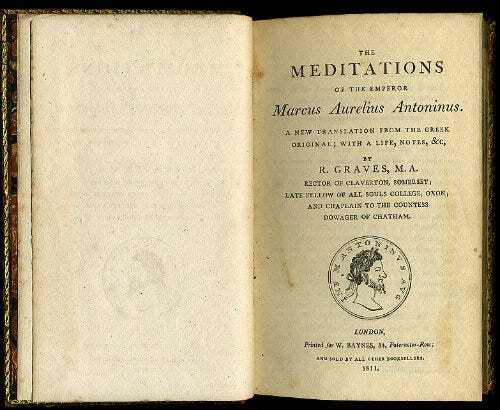
So let’s compare what Marcus wrote to what Epictetus reputedly said. Marcus begins by associating “endure and renounce” with the attainment of tranquillity or peace of mind, which is consistent with what we have from Epictetus. Like Epictetus, Marcus says that exemplifying “endure and renounce” in your life is almost sufficient for achieving virtue and tranquillity. Marcus adds that we must also venerate the gods and do good to men, which may be an allusion to the cardinal virtue of justice. This makes it clear that the slogan, or “these two words”, must refer to something very fundamental to Stoic Ethics, and almost capture the goal of life itself. I think we can safely conclude, therefore, that they do, indeed, refer to the cardinal virtues of courage and moderation.
Marcus makes it clear that “endure and renounce” is meant to refer to “what is up to us”, our own voluntary thoughts and actions. These qualities entail taking more responsibility for our own responses, and accepting that the external things to which they refer, such as the things we fear or desire, are not up to us — those are not under our direct control. In short, he’s saying that we control our responses to painful and pleasurable experiences, but external events themselves are always, to some extent, in the hands of fate — we can always choose to endure (bear) pain or renounce (forbear from) pleasure.
Marcus says this is the key to a “smoothly flowing life”, which is an early Stoic definition of eudaimonia, or the supreme goal of life. In the following passage, quoted above, he still seems to be referring to “endure and renounce” when he says: “not to be hindered by another, and to hold good to consist in the disposition to justice and the practice of it, and in this to let your desire find its termination.”
The virtues of courage and endurance specifically relate to managing our fears and desires. Here Marcus says that eudaimonia, the goal of life, consists in acting in accord with justice, although the Greek arguably implies social virtue in a broader sense than our English word. To do this, though, we must have the strength of character to manage our desires accordingly — so that certain fears and desires do not lead us astray from the right path in life.
Here, Hays’ translation is more helpful than Long’s:
Not to let others hold you back.
To locate goodness in thinking and doing the right thing, and to limit your desires to that. — Meditations, 5.34, Hays
In other words, we must:
Have the fortitude or courage to endure (bear with) other people, and not to become angry with them
Have the temperance or self-control to renounce (forbear from) our desire for things that would lead us away from the path of virtue and justice\
In conclusion, although “endure and renounce” comes down to us as a third-hand fragment via Aulus Gellius and Favorinus of Arelate, it does seem likely to be an authentic saying of Epictetus, as Marcus Aurelius also seems to knows this slogan and to interpret it in a very similar manner.
Thank you for reading Stoicism: Philosophy as a Way of Life. This post is public so feel free to share it.
March 9, 2024
Invite your friends to read Stoicism: Philosophy as a Way of Life
Thank you for reading Stoicism: Philosophy as a Way of Life — your support allows me to keep doing this work.
If you enjoy Stoicism: Philosophy as a Way of Life, it would mean the world to me if you invited friends to subscribe and read with us. If you refer friends, you will receive benefits that give you special access to Stoicism: Philosophy as a Way of Life.
How to participate
1. Share Stoicism: Philosophy as a Way of Life. When you use the referral link below, or the “Share” button on any post, you'll get credit for any new subscribers. Simply send the link in a text, email, or share it on social media with friends.
2. Earn benefits. When more friends use your referral link to subscribe (free or paid), you’ll receive special benefits.
Get a 1 month comp for 3 referrals
Get a 3 month comp for 5 referrals
Get a 6 month comp for 25 referrals
To learn more, check out Substack’s FAQ.
Thank you for helping get the word out!
March 7, 2024
Live Now: Join my AMA about Marcus Aurelius on Reddit!
We’re live! For the rest of today, I’ll be answering questions on the History Subreddit. We’d love you to join the discussion.
You are invited to join me for an AMA (Ask Me Anything) on the History Subreddit, starting at 12pm EST today, Thursday 7th March, and continuing for most of the day. Previous AMAs I’ve done have been very busy, with over a million views, and hundreds of comments posted within 24 hours of going live. This is a forum for everyone, it has 18 million members worldwide, but many users are students of history so the questions should be very interesting. Please come along and join the discussion or show your support by reacting to the AMA post!

I’ll be answering as many questions as I can, live throughout the day — you can literally ask me anything. However, I was invited mainly because of the recent biography I’ve written, Marcus Aurelius: The Stoic Emperor, which is part of Yale University Press’ Ancient Lives series, edited by James Romm. So you can expect a lot of historical discussion of the life and thought of Marcus Aurelius!
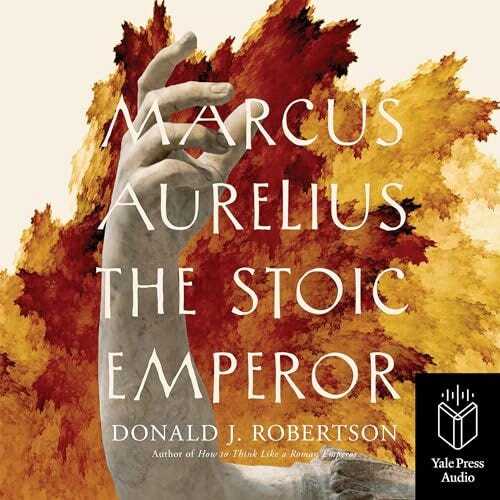
Stoicism: Philosophy as a Way of Life is a reader-supported publication. To receive new posts and support my work, consider becoming a free or paid subscriber.
I look forward to seeing you there. Please share the link with your friends.
Thank you for reading Stoicism: Philosophy as a Way of Life. This post is public so feel free to share it.
Regards,
Donald Robertson
The metaphor of financial transactions
CommentaryIf you wish to make progress, dismiss all reasoning of this sort: “If I neglect my affairs, I shall have nothing to live on.” “If I do not punish my slave-boy he will turn out bad.” For it is better to die of hunger, but in a state of freedom from grief and fear, than to live in plenty, but troubled in mind. And it is better for your slave-boy to be bad than for you to be unhappy. Begin, therefore, with the little things. Your paltry oil gets spilled, your miserable wine stolen; say to yourself, “This is the price paid for a calm spirit, this the price for peace of mind.” Nothing is got without a price. And when you call your slave-boy, bear in mind that it is possible he may not heed you, and again, that even if he does heed, he may not do what you want done. But he is not in so happy a condition that your peace of mind depends upon him.
March 6, 2024
TIME: "Why We Still Read Marcus Aurelius’ Meditations"
In the middle of the second century CE, the most powerful man in the Western world sat in the legionary fortress of Carnuntum, by the River Danube, contemplating the fact that one day nobody would remember his name. “Near is your forgetfulness of all things,” he wrote, “and near the forgetfulness of you by all” —but he spoke too soon.
More than eighteen hundred years after his demise, probably from plague, we’re still talking about Marcus Aurelius. In fact, we’re going on about him more than ever. That’s largely due to the long-standing popularity of the Meditations, the notes he wrote for himself about how to apply Stoic philosophy in daily life.
Stoicism: Philosophy as a Way of Life is a reader-supported publication. To receive new posts and support my work, consider becoming a free or paid subscriber.
Andrew Tate, has recently claimed to be a fan of Marcus Aurelius. There’s a fundamental difference, though, between the self-improvement advice given by the likes of Tate and the philosophy found in the Meditations of Marcus Aurelius.
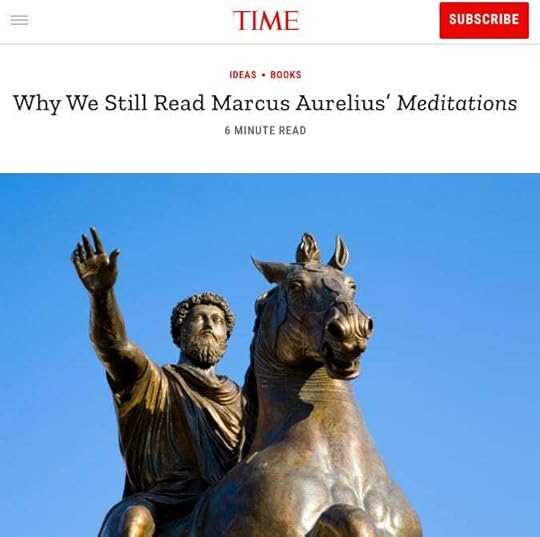
Thank you for reading Stoicism: Philosophy as a Way of Life. This post is public so feel free to share it.
March 5, 2024
Join me for a Marcus Aurelius AMA on Reddit
You are invited to join me for an AMA (Ask Me Anything) on the History Subreddit, starting at 12pm EST on Thursday 7th March, and continuing for most of the day. Previous AMAs I’ve done have been very busy, with over a million views, and hundreds of comments posted within 24 hours of going live. This is a forum for everyone, it has 18 million members worldwide, but many users are students of history so the questions should be very interesting. Please come along and join the discussion or show your support by reacting to the AMA post!
The link will not go live until the day of the event but you’ll be able to find the AMA simply by visiting the History Subreddit, so bookmark the page in advance if you don’t want to miss it. (You should also see a promo post appearing there, from the moderators, a day or two before the event.)

I’ll be answering as many questions as I can, live throughout the day — you can literally ask me anything. However, I was invited mainly because of the recent biography I’ve written, Marcus Aurelius: The Stoic Emperor, which is part of Yale University Press’ Ancient Lives series, edited by James Romm. So you can expect a lot of historical discussion of the life and thought of Marcus Aurelius!

Stoicism: Philosophy as a Way of Life is a reader-supported publication. To receive new posts and support my work, consider becoming a free or paid subscriber.
I look forward to seeing you there. Please share the link with your friends.
Thank you for reading Stoicism: Philosophy as a Way of Life. This post is public so feel free to share it.
Regards,
Donald Robertson
How Spanish is Stoicism?
I was recently asked by Temas de Hoy the Spanish publisher, to write an introduction to their new (Jan 2024) edition of How to Think Like a Roman Emperor.
The Latin American edition, Piensa como un emperador romano, was released in June 2020 by Planeta Publishing. It has been reviewed over 220 times on Amazon. The audiobook of this translation, narrated by Carlos Garza, has also proven to be very popular.
Stoicism: Philosophy as a Way of Life is a reader-supported publication. To receive new posts and support my work, consider becoming a free or paid subscriber.
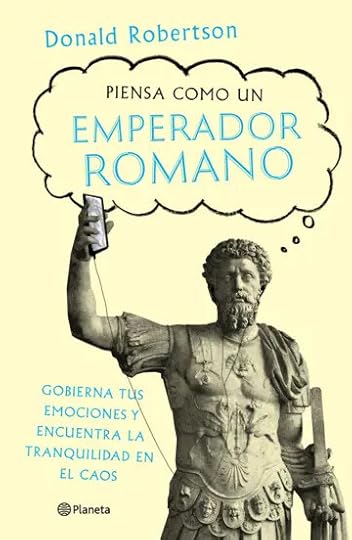
How to Think Like a Roman Emperor has been translated, at the time of writing, into around twenty languages. I was pleased to learn that it has become so popular in Spanish, and that there is growing interest in Stoicism in Latin America and also in Spain. I think this is especially important as Spain is the birthplace of at least one important Stoic philosopher during the Roman Imperial era, and has links with the family of another.
The famous Stoic philosopher, Seneca the Younger (aka Lucius Annaeus Seneca), of course, was born in Corduba (modern-day Córdoba) the capital city of the Roman province of Hispania Baetica (the modern-day Andalusia region of Spain). His father, whom we call Seneca the Elder, was a rhetorician and Roman equestrian or knight. They moved to Rome when the boy was still young, possibly around five years old. Other members of Seneca’s family appear to have been interested in Stoicism, such as his nephew, the famous Latin poet Lucan (aka Marcus Annaeus Lucanus), who was also born in Corduba.
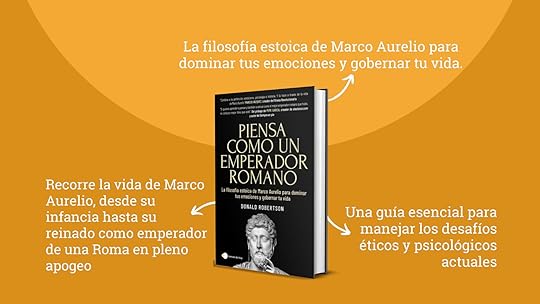
The emperor Marcus Aurelius, although born in Rome, came from an important family of the senatorial class, whose ancestral home was originally in Hispania Baetica. His grandfather, Marcus Annius Verus, was born in Succuba (modern Espejo) about a day’s walk from Corduba, the birthplace of Seneca. Seneca was executed by Emperor Nero in 65 CE, when Marcus’ grandfather was probably aged around fifteen, and commencing his tertiary education. Seneca must have been particularly famous in his birthplace and so Marcus’ paternal family would undoubtedly have been very familiar with his writings.
There’s a curious expression in a letter written by Fronto (his Latin rhetoric master) to Marcus. Fronto is rambling on about the art of rhetoric and refers in passing to “your Annaeus”, of whose writing style he is not a fan. The context makes it explicit that he is referring to Lucius Annaeus Seneca, the famous Stoic philosopher - but why did he say your Annaeus? The most natural assumption is that he’s alluding to the fact that Seneca and Marcus are both Stoics. However, Fronto may also be alluding to the fact that Seneca’s family were once neighbours of Marcus’ family in Hispania Baetica. (Although Seneca moved to Rome as a young boy and Marcus was born in Rome, generations later, their families probably still owned these rural estates.)
Indeed, Marcus took special care of his ancestral homeland, according to the Historia Augusta.
He made scrupulous provision, furthermore, for the welfare of the provinces of Hispania, which, in defiance of the policy of Trajan, had been exhausted by levies from the Italian settlers.
Moreover, in addition to fighting major wars in Parthia and Germania, Marcus sent his generals to defend Spain against a devastating Moorish invasion, believed to have taken place around 172-173 CE.
Against the Mauri, when they wasted almost the whole of Hispania, matters were brought to a successful conclusion by his legates.
Marcus may have been encouraged to study Stoicism by his adoptive grandfather, Emperor Hadrian, who was born in the town of Italica (modern Santiponce) near Seville — when he first came to Rome, aged around fourteen, Hadrian was mocked for his provincial Baetican accent, which he retained throughout life.
Hadrian was famously a hellenophile who loved to dabble in Greek philosophy and literature. He appears to have met the Stoic teacher, Epictetus, during his time in Greece. Although Marcus never met Epictetus himself, he obtained a copy of his Discourses, which became his main inspiration in life. Hadrian, although not a good example of Stoic virtue himself, may even have had some influence over the choice of Marcus’ tutors, among whom Stoics feature prominently. Hadrian promoted influential Stoics such as Arrian, the transcriber of Epictetus’ Discourses, and both Claudius Maximus and Junius Rusticus, two of Marcus’ Stoic tutors. These three Stoics all became consuls and occupied senior military posts under Hadrian. Though no Stoic himself, therefore, Hadrian, who was like Seneca born in Spain, paved the way for Marcus Aurelius to surround himself with Stoic mentors.
Stoicism: Philosophy as a Way of Life is a reader-supported publication. To receive new posts and support my work, consider becoming a free or paid subscriber.
February 26, 2024
Marcus Aurelius on "The Art of Manliness"
Brett McKay from The Art of Manliness has just published an interview I did for his podcast about Marcus Aurelius: The Stoic Emperor. We touch on Marcus Aurelius' (paradoxical) views about the nature of manliness in this podcast, along with many other aspects. Brett asked some really great questions! I hope you enjoy. Please share. Thanks!
Stoicism: Philosophy as a Way of Life is a reader-supported publication. To receive new posts and support my work, consider becoming a free or paid subscriber.

Thank you for reading Stoicism: Philosophy as a Way of Life. This post is public so feel free to share it.



